Research Applications Department
Research Applications Department
- Cloud and precipitation microphysics researches using a cloud chamber and a ground based measurement
- Weather modification experiment and studies using an aircraft and a ground based equipment
- Meteorological resource’s researches for renewable energy
- Aviation meteorological studies for safe operation from weather hazards at the airport
- Technology development for Urban Meteorological Information Services
- Biometeorological research includes the impacts of weather environment on living organisms and their interactions
Cloud physics research
- The cloud and precipitation microphysics are important information for understanding weather and climate change and their uncertainties make big problems for improving the weather/climate forecasting and weather modification techniques
- For reduce the uncertainties, This team is operating the cloud physics observational station (CPOS) at 11 sites in Korea. The CPOS mainly observes the cloud and precipitation drop size and number concentration
- Recently, Cloud Physics Experimental Chamber (CPEC) was constructed and will be used for studying cloud/precipitation microphysics, weather modifi-cation, and aerosol-cloud interaction, etc.
- Also, this team is implementing the ground based weather modification using by a weather modification drone and an automatic cloud seeding system
 |
| <Ground based cloud seeding experiment> |
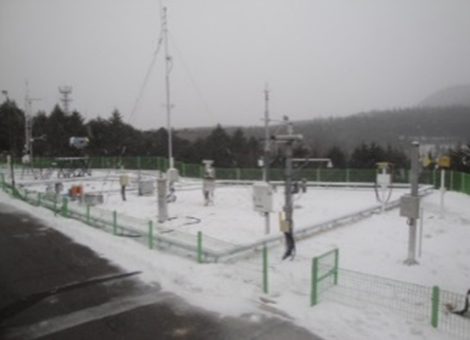 | 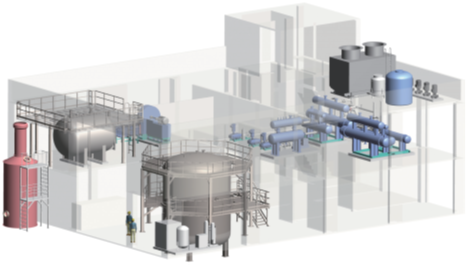 |
| <Cloud physics Observational Station> | <Cloud physics Experimental Chamber> |
Weather modification
- Weather modification is a scientific process that improves a cloud's ability to make rain or snow, and can help in areas that don't have a enough supply of natural water. The enhanced precipitation by cloud seeding experiments may reduce the forest fire, drought, and unhealthy aerosols
- Airborne cloud seeding experimental mothods are developed. Seeding materials, seeding track, and the numerical prediction of cloud situation have been studied for the effectiveness of precipitation enhancement
- Ground-based and airborne observation give the understandings of cloud, and the verification results for the weather modification experiments. The observation for cloud particle distribution before and after seeding can give the validation results of experiment
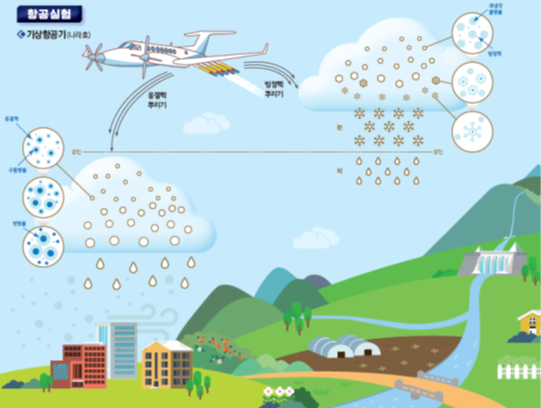 |
| <Schematic diagram of cloud seeding experiment by aircraft> |
Aviation Meteorology and Meteorological Resources
- The meteorological information plays an important role for aircraft and airport operation. For safe operation from weather hazards at the airport (low-level wind shear, turbulence, etc.), we are conducting research to improve the accuracy of forecasting and warning of weather hazards
- Renewable energy technologies are highly dependent on meteorological and climate related factors including sunlight and wind speed. As renewable energy generation increases, we produce high-resolution wind and solar weather maps using numerical model
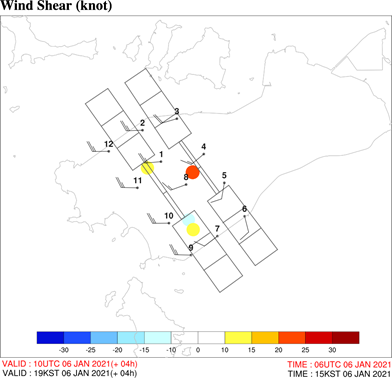 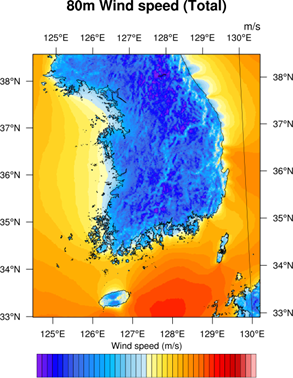 |
| <Examples of forecasting result of Low-level wind shear alert system in Incheon airport (left), and wind resource map in South Korea (right)> |
Urban meteorology
- Producing 3-dimensional wind flows from observation using ground-based and remote sensing instruments, and numerical modeling for the urban area
- Investigating air flow & turbulence around high-rise buildings using observation(ultra-sonic anemometer, Doppler lidar) and modeling(CFD, LES), of which information may be applied to Urban Air Mobility business
- Urban micro-climate such as urban heat island, heat wave/tropical night, CO2 flux, and local circulation
- Observing urban energy balance including anthropogenic heat emission and comparing to Urban Canopy Model
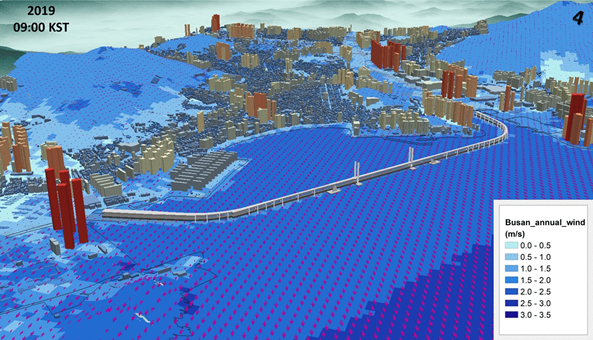 |
| <Numerical simulation of air flows over Haeundae in Busan city> |
Human biometeorology and Agrometeorology
- The impacts of heat and cold waves on human health are evaluated by mortality and morbidity rates and quantified as threshold temperatures for operational heat/cold advisories of KMA
- With the climate change, the allergenic pollens are increasing in Korea. Daily pollen concentrations are monitored more than two decades throughout the Peninsula and models are developed to forecast daily pollen allergy risks based on the observation
- Gaps between operational and agricultural meteorology such as wind gusts at 3 m height and automated frost observation and forecast are being filled to support the farmers’ needs at the field
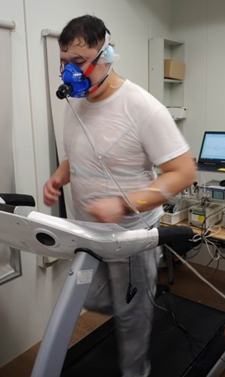 | 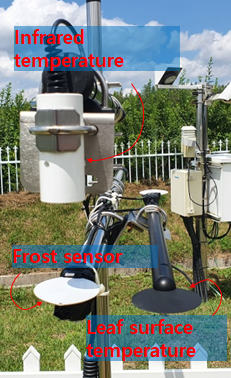 |
| <Heat stress experiment> | <Frost observation system> |
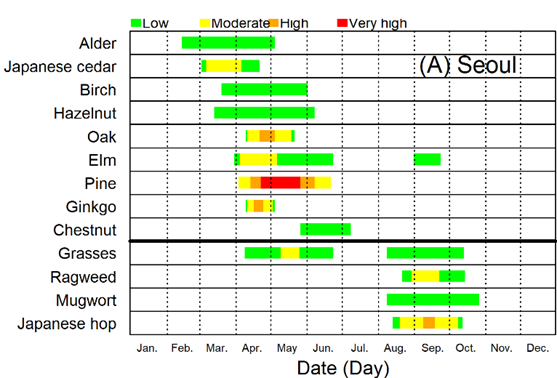 |
| <Pollen allergy calendar> |











